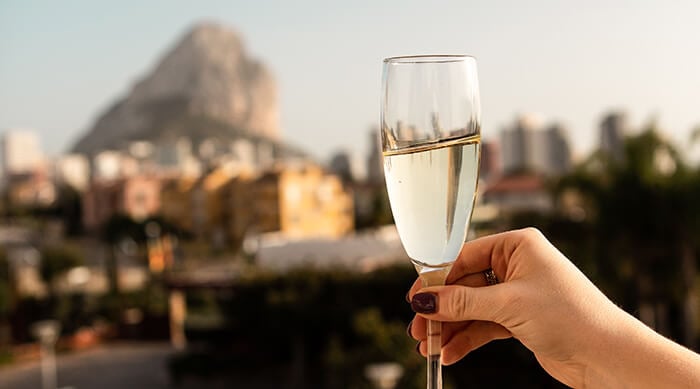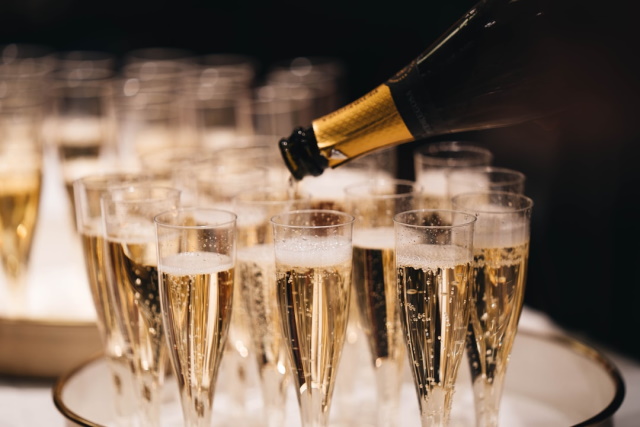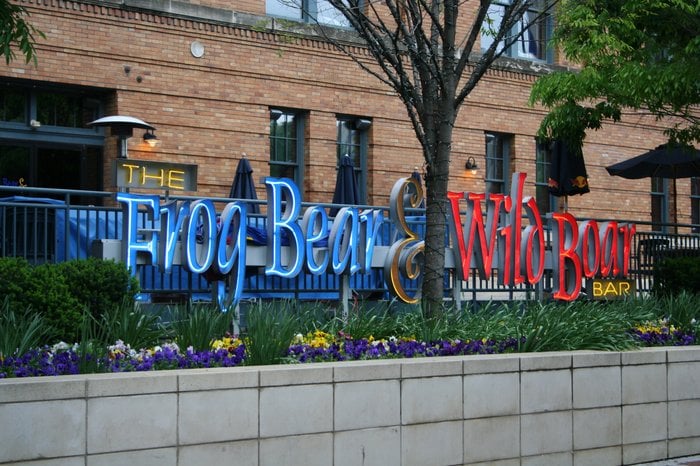Introduction To Alcohol Content In Champagne

Champagne, the iconic sparkling wine from France, is renowned for its effervescence and elegance. As with any alcoholic beverage, understanding the alcohol content in Champagne is essential for both enjoyment and responsible consumption. The alcohol content of Champagne typically falls around 12% ABV (alcohol by volume), but it can vary depending on the brand and type of Champagne. Factors such as grape variety, fermentation process, and aging techniques can influence the alcohol levels. In this article, we will delve deeper into the standard alcohol content of Champagne, explore variations, and discuss the impact it has on the taste and experience of this beloved beverage.
Understanding Alcohol Content In Champagne
Understanding the alcohol content in Champagne is crucial for consumers to make informed choices. Champagne typically contains around 12% ABV (alcohol by volume), although this can vary depending on the brand and type. The alcohol content is determined using a standardized method used worldwide. Being aware of the ABV allows individuals to enjoy Champagne responsibly, ensuring they do not compromise their health or judgement. By understanding the alcohol content, consumers can select the Champagne that aligns with their preferences and make responsible decisions when it comes to consumption.
Factors Affecting Alcohol Content In Champagne
The alcohol content in Champagne is influenced by various factors. One significant factor is the grape variety used in the production process. Different grape varieties have varying sugar levels, which in turn affects the alcohol content. The climate also plays a role, as warmer climates tend to produce grapes with higher sugar levels, resulting in a higher alcohol content. Additionally, the fermentation process and the duration of aging can also impact the final alcohol percentage. These factors collectively contribute to the unique alcohol content found in different Champagne varieties.
The Standard Alcohol Content In Champagne

The standard alcohol content in Champagne typically falls around 12% ABV (alcohol by volume). It is important to note that this percentage can vary depending on the specific brand and type of Champagne. The alcohol content is regulated and determined through a standardized method used across the globe for alcoholic beverages. The 12% ABV provides a balanced and enjoyable drinking experience, allowing the flavors and effervescence of the Champagne to shine. It is worth noting that some Champagne brands may have slightly higher or lower alcohol content depending on their production processes and desired flavor profiles.
The Average Alcohol Percentage In Champagne
The average alcohol percentage in Champagne is around 12%. This is the standard alcohol content for most Champagne brands and types. However, it is important to note that the alcohol levels can vary depending on the specific brand and production process. While some Champagne brands may have slightly higher or lower alcohol content, the majority fall within the 12% range. This percentage provides a balanced and enjoyable drinking experience, allowing the flavors and effervescence of the Champagne to shine. So, when selecting a bottle of Champagne, you can expect it to have an alcohol content of approximately 12%.
Regulations And Guidelines For Alcohol Content In Champagne
Regulations and guidelines ensure that the alcohol content in Champagne meets certain standards. The Appellation d’Origine Contrôlée (AOC) regulations in France stipulate that Champagne must have a minimum alcohol content of 9.5% ABV. However, most Champagnes have an average alcohol percentage of around 12%. Champagne houses and producers follow strict production methods and quality control measures to maintain consistency in alcohol content. These regulations aim to guarantee the quality and integrity of Champagne, ensuring that consumers can trust the alcohol strength and enjoy their bubbly experience.
Popular Champagne Brands And Their Alcohol Content

When it comes to Champagne, there are several popular brands known for their unique flavors and impeccable quality. Below are two examples, showcasing their alcohol content and distinct characteristics:
- Champagne Brand A: With an alcohol content of around 12%, Brand A offers a balanced and crisp taste. It boasts flavors of citrus and green apple, making it a refreshing choice for Champagne enthusiasts. This brand follows traditional production methods, ensuring consistency and elegance in every bottle.
- Champagne Brand B: Known for its complexity and depth, Brand B has a slightly higher alcohol content at 13%. It is characterized by rich aromas of toasted brioche and stone fruit, creating a luxurious experience for the palate. The production process involves extended aging, resulting in a velvety texture and a lingering finish.
Both of these Champagne brands have their own distinct profiles, providing a range of options for those seeking different flavor profiles and alcohol content in their bubbly experience.
Champagne Brand A: Alcohol Content And Flavor Profile
Champagne Brand A offers a balanced and crisp taste, with an alcohol content of around 12%. It is renowned for its flavors of citrus and green apple, making it a refreshing choice for Champagne enthusiasts. This brand follows traditional production methods, ensuring consistency and elegance in every bottle. With its moderate alcohol content, Champagne Brand A presents a harmonious blend of flavors that delight the palate. Its distinct flavor profile makes it a popular choice for those looking for a refreshing and refined Champagne experience.
Champagne Brand B: Alcohol Content And Production Process
Champagne Brand B is known for its exceptional quality and unique production process. With an alcohol content of approximately 12.5%, it offers a slightly higher strength compared to other Champagne brands. The production process of Champagne Brand B follows the traditional method, also known as the méthode champenoise. This involves a second fermentation in the bottle, which creates the characteristic bubbles and enhances the flavors. The grapes used for Champagne Brand B are carefully selected and undergo a meticulous process of pressing, fermentation, and aging. This attention to detail results in a Champagne that is celebrated for its complexity and elegance.
Exploring Variations In Champagne Alcohol Content

Exploring the variations in Champagne alcohol content unveils the diversity within this sparkling beverage. Vintage Champagne, known for its exceptional quality, often contains a higher alcohol content due to the extended aging process. On the other hand, sweet Champagne may have a slightly lower alcohol content, as the residual sugar balances the overall taste. These variations in alcohol content contribute to the unique characteristics of different Champagne styles, allowing enthusiasts to choose a bottle that aligns with their preferences. Whether you prefer a high-alcohol vintage Champagne or a slightly sweeter option, there is a Champagne to suit every palate. [source]
Vintage Champagne: Alcohol Content And Aging Process
Vintage Champagne is known for its exceptional quality and often contains a higher alcohol content compared to non-vintage varieties. The extended aging process contributes to the development of complex flavors and aromas in the wine. During aging, alcohol can slightly increase due to the evaporation of water, resulting in a higher alcohol content. This aging process can last for several years, allowing the Champagne to develop a rich and nuanced character. As a result, vintage Champagne typically has a higher alcohol content, adding depth and intensity to the overall taste experience.
Sweet Champagne: Alcohol Content And Residual Sugar Levels
Sweet Champagne refers to the type of Champagne that has a higher level of residual sugar, resulting in a sweeter taste. The alcohol content of Sweet Champagne can vary, but it generally falls within the average range of 11-13%. The residual sugar levels, on the other hand, can range from 17-50 grams per liter. The sweetness level in Sweet Champagne is determined by the dosage, which is a mixture of sugar and wine added after the disgorging process. The dosage is added to balance the acidity and create the desired level of sweetness in the final product.
The Impact Of Alcohol Content On Champagne Taste And Experience

The alcohol content of Champagne plays a significant role in determining its taste and overall drinking experience. The balance between alcohol and acidity is crucial in achieving the desired flavor profile. Higher alcohol content can enhance the perception of body and richness in Champagne, but it may also lead to a slight warming sensation on the palate. On the other hand, lower alcohol content can result in a lighter and more refreshing taste. It is important for Champagne enthusiasts to consider their personal preferences and desired drinking experience when choosing a bottle with the right alcohol content.
Balance Between Alcohol And Acidity In Champagne
The balance between alcohol and acidity is crucial in creating the exceptional taste and drinking experience of Champagne. The alcohol content, usually ranging between 11.5% and 12.5% ABV, adds body and richness to the Champagne. Meanwhile, the acidity provides freshness and liveliness to the wine. When these two elements are in harmony, they create a well-rounded and balanced flavor profile. It is this delicate equilibrium between alcohol and acidity that contributes to the unique and enjoyable taste of Champagne.
Effect Of Higher Alcohol Content On Champagne’s Aroma And Mouthfeel
Higher alcohol content in Champagne can have a noticeable impact on its aroma and mouthfeel. The increased alcohol can intensify the aroma, bringing out richer and more complex notes. It can also create a warming sensation on the palate and enhance the full-bodied nature of the Champagne. However, excessive alcohol can overpower the delicate flavors and aromas, resulting in a harsh or burning sensation. It is important to find a balance where the alcohol complements the wine’s characteristics without overpowering them, ensuring a smooth and enjoyable drinking experience.
Conclusion

In conclusion, understanding the alcohol content in Champagne is essential for making informed decisions about consumption. The average alcohol percentage in Champagne is around 12% ABV, with regulations and guidelines in place to maintain consistency. Different Champagne brands may have varying alcohol content, which can influence the flavor profile and production process. Vintage Champagne and sweet Champagne also exhibit variations in alcohol content due to aging and residual sugar levels. Finding the right Champagne with the desired alcohol content is crucial for a balanced and enjoyable drinking experience. Remember to always consume Champagne responsibly and in moderation.
Finding The Right Champagne With The Desired Alcohol Content
When it comes to finding the right Champagne with the desired alcohol content, there are a few key factors to consider. First, check the label for the “ABV” or “alcohol by volume” percentage, which typically ranges from 11% to 12.5% in Champagne. If you prefer a lighter-bodied Champagne, opt for varieties with a lower alcohol content. On the other hand, if you enjoy a fuller-bodied Champagne, look for those with a slightly higher alcohol content. It’s also helpful to research specific brands and their alcohol levels to find one that aligns with your preferences. Remember to always drink responsibly and in moderation.
Tips For Enjoying Champagne Responsibly
- Pace yourself: Champagne is often enjoyed during celebrations, but it’s important to drink in moderation. Sip slowly and savor the flavors rather than gulping it down.
- Alternate with water: Stay hydrated by alternating sips of Champagne with sips of water. This will help prevent dehydration and moderate your alcohol intake.
- Know your limits: Understand your tolerance for alcohol and know when to stop. Don’t feel pressured to keep up with others if it’s starting to affect you.
- Eat before drinking: Consuming food before drinking Champagne can help slow down the absorption of alcohol into your bloodstream. Have a meal or snack to help balance out the effects.
- Have a designated driver: If you’re attending a party or event where Champagne will be served, plan ahead and ensure you have a designated driver or arrange for a safe ride home.
Remember, responsible Champagne consumption allows you to enjoy the celebratory experience while prioritizing your well-being and the safety of others.
FAQ: Alcohol Content in Champagne
Q: What is the alcohol content in champagne?
A: The alcohol content in champagne typically ranges between 11.5% and 12.5% by volume. However, some champagnes may have higher or lower alcohol levels depending on the specific brand and style.
Q: What factors contribute to the alcohol content in champagne?
A: The alcohol content in champagne is determined by the fermentation process. It primarily depends on the amount of sugar present in the grapes and the duration of fermentation. The longer the fermentation, the higher the alcohol content.
Q: Can the alcohol content in champagne vary between different bottles or brands?
A: Yes, the alcohol content can vary between different bottles and brands of champagne. While most champagnes fall within the typical range of 11.5% to 12.5%, some may have slightly higher or lower alcohol levels. It is advisable to check the label or product description for the specific alcohol content of the champagne you are purchasing.
Q: Are there any champagnes with lower alcohol content available?
A: Yes, there are some champagnes available with lower alcohol content. These are typically labeled as “low alcohol” or “light” champagnes and often have an alcohol content below 11.5%. These options might be suitable for individuals who prefer lighter alcoholic beverages.
Q: Are there any champagnes with higher alcohol content available?
A: Yes, there are champagnes available with higher alcohol content. These can be labeled as “high alcohol” or “extra brut” and may have an alcohol content above 12.5%. These champagnes often have a stronger taste and can be preferred by those who enjoy bolder flavors.
Q: How does the alcohol content affect the taste of champagne?
A: The alcohol content contributes to the overall taste of champagne. Higher alcohol levels can give a fuller body and more pronounced flavors, while lower alcohol levels can create a lighter and more delicate taste. It is a personal preference, and different people can have varying preferences regarding the alcohol content in champagne.
Q: Is it possible to reduce the alcohol content in champagne?
A: It is not possible to reduce the alcohol content in champagne once it has been bottled and sealed. However, you can dilute it with sparkling water or other non-alcoholic beverages to make a refreshing spritzer with a lower overall alcohol content.
Q: Why is it important to be aware of the alcohol content in champagne?
A: Being aware of the alcohol content in champagne is essential for several reasons. It helps individuals make informed decisions based on their personal preferences and tolerance for alcohol. Additionally, individuals with specific dietary restrictions or health concerns may need to monitor their alcohol intake carefully.
Q: Is champagne considered a high-alcohol beverage?
A: Champagne is generally not classified as a high-alcohol beverage. It falls within the range of many other wines and spirits. However, it is still advisable to consume champagne responsibly and be aware of one’s alcohol consumption to avoid any adverse effects.
Q: Can the alcohol content in champagne affect the ability to drive or operate machinery?
A: Yes, like any alcoholic beverage, champagne can impair your ability to drive or operate machinery if consumed in excess. It is important to drink responsibly and be aware of the alcohol content to ensure your safety and the safety of others.

Frog Bear & Wild Boar is a vibrant and dynamic establishment located at 343 N Front St. in the heart of the Arena District in Columbus, OH. Our story began with a passion for creating an inviting and lively environment where friends, families, and colleagues can come together to enjoy great food, refreshing drinks, and fantastic entertainment. Founded on the principles of warm hospitality, delicious cuisine, and a commitment to community, Frog Bear & Wild Boar has become a beloved gathering place for locals and visitors alike. Our dedication to delivering exceptional experiences has earned us a reputation for being a go-to destination for memorable outings and special occasions.